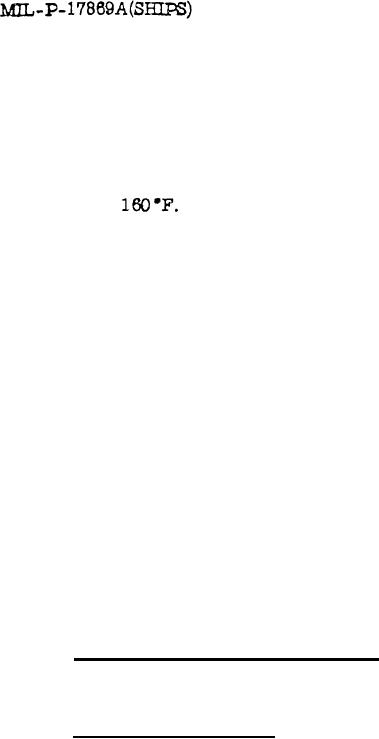 |
|||
|
Page Title:
Qualification tests at a laboratory |
|
||
| ||||||||||
|
|  (d) Failure to perform satisfactorily on overload test
(see 4.10.5).
(e) Excessive leakage (see 3.4.1.2, 3.4.2.2, 3.4.3.2
and 4.10. 6).
(f) Nonsymmetrical stroke control effort for each side of
neutral (see 3.4.1.5 and 4.10.7).
(g) Heating of pump or motor parts or temperature rise in
hydraulic fluid during lubrication test in excess of
(see 3.3.13 and 4.10.8).
(h) Any marked change in performance during inclination
test (see 4.10.9).
(i) Pulsation in excess of 5 percent (see 3.3.16 and 4.10.10),
(j) Labored starting during cold oil test (see 4.10.11).
(k) Drop in efficiency in excess of allowance during hot oil
test (see 3.4.1.2, 3.4.2.2, 3.4.3.2 and 4.10.12).
(l) Excessive wear of parts on completion of endurance test,
Excessive wear shall be that which is sufficient to reduce
pump performance and that which would indicate short
life of the pump or motor.
(m) Excessive time to accelerate hydraulic motor. Generally,
anything in excess of 0.1 second for any size motor will
be considered excessive (see 4.10.15).
(n) Erratic operation of hydraulic motor at 50 r.p.m.
(see 4.10.16).
(0) Breakage or malf unctioning of pump or motor as defined
in Specification MIL-S-901 during shock test
(see 3.3.20 and 4.10.17).
(p) Squeal and chatter determined to be of hydraulic origin
(see 3.3.17).
(q) Excessive weight and size (see 3.3.18).
4.12 Qualification tests at a laboratory. - Qualification tests shall be
-
conducted at a laboratory designated by the Bureau of Ships. These tests
shall consist of the tests specified in 4.10.
4.13 Inspection procedures. - For Naval purchases, the general inspection
procedures shall be in accordan ce with General-Specifications for Inspection of
Material.
22
|
|
Privacy Statement - Press Release - Copyright Information. - Contact Us |